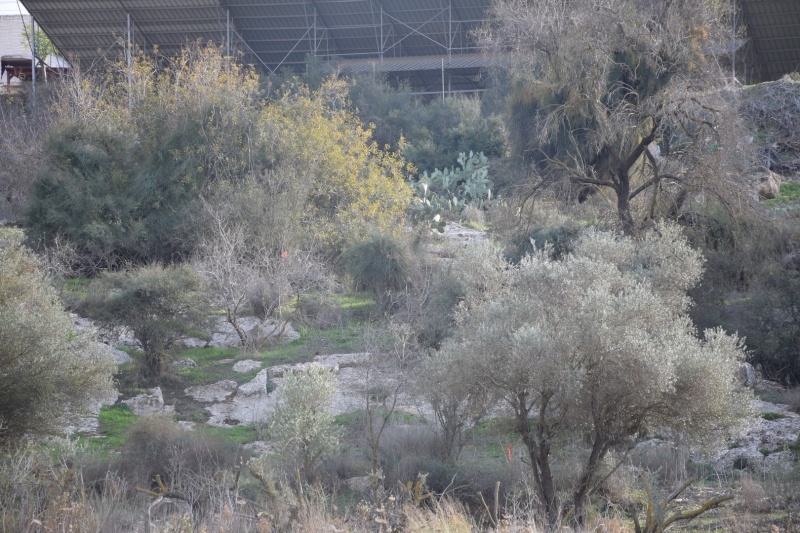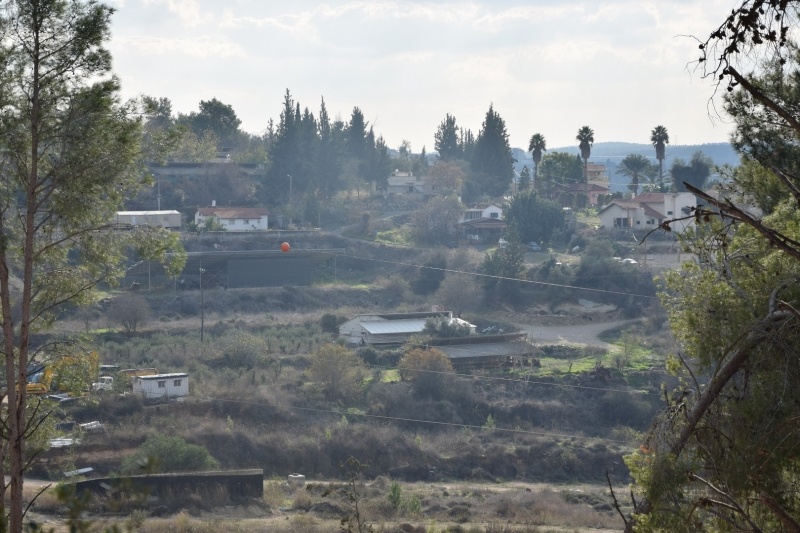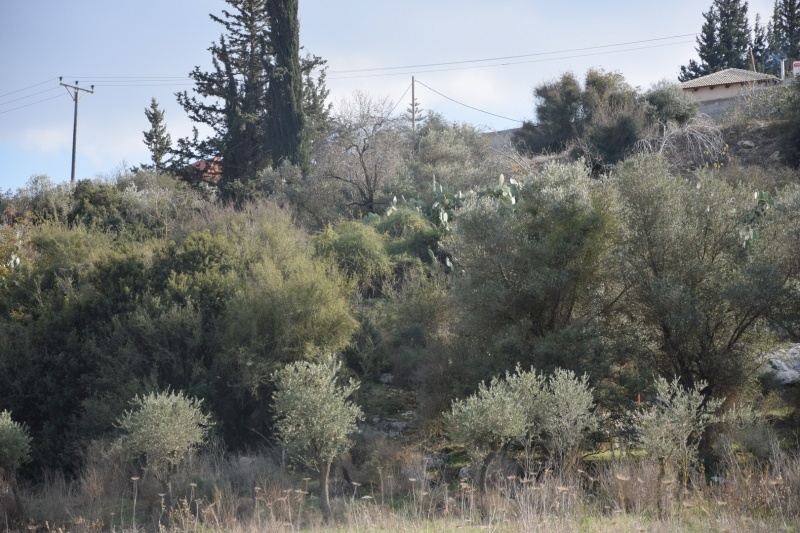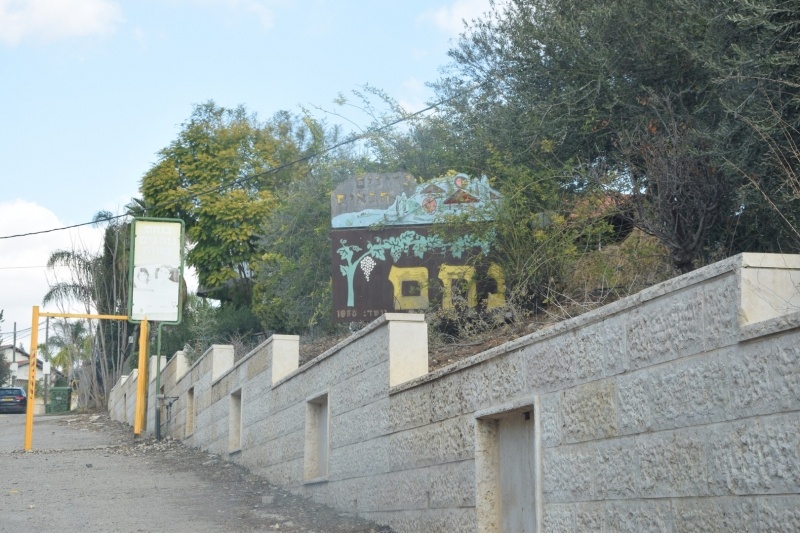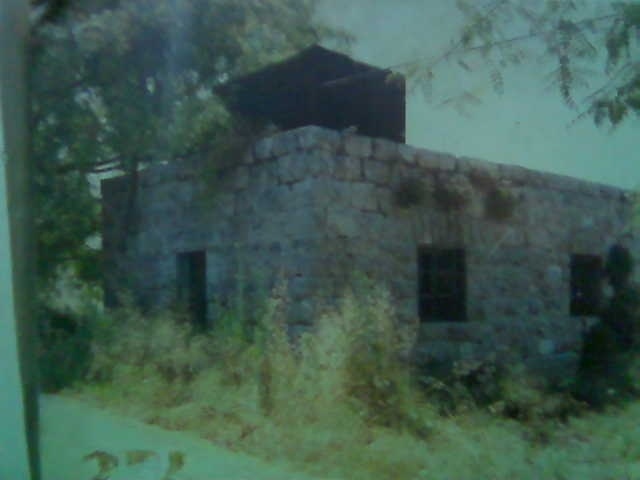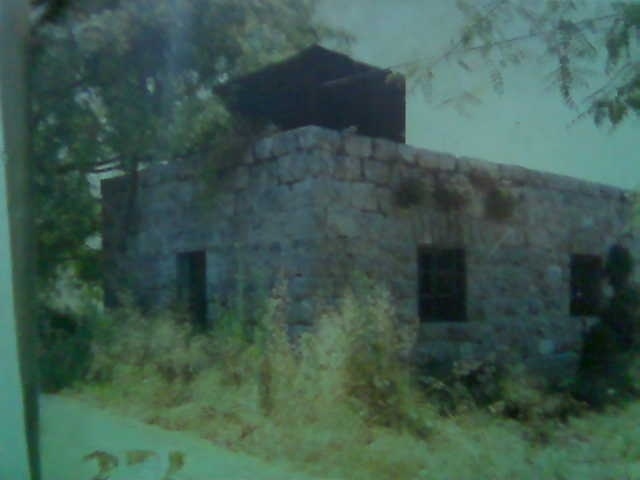Info
District: al-Quds (Jerusalem)
Population 1948: 410
Occupation date: 18/07/1948
Occupying unit: Har'el (palmah)
Jewish settlements on village/town land before 1948: Hartuv
Jewish settlements on village/town land after 1948: None
Background:
‘Artuf Before 1948
The village stood on a moderately high plateau, surrounded by plains on the south, east, and west. It was on a secondary road that linked it to a highway leading to Jerusalem. In 1596, ‘Artuf was a village in the nahiya of Ramla with a population of 110. It paid taxes on a number of crops, including wheat, barley, fruit, as well as on other types of produce and property, such as goats, beehives, and vineyards. In the late nineteenth century, ‘Artuf was a small village built on a low hill overlooking a valley. The villagers obtained their water from a pool in the valley. Most houses were built of stone and mud; a few were built of stone and cement and had domed roofs. The residents, who were Muslims, worshiped in a mosque called the al-’Umari Mosque, perhaps in reference to ’Umar ibn al-Khattab, the second Muslim caliph. The tomb of a local Muslim sage named Shaykh ’Ali al-Ghimadi stood on the outskirts of the village.
During the Mandate, the authorities established a fortified police station about 1 km west of ‘Artuf and a train station just beyond that. In addition, ‘Artuf had an elementary school. There was also a small Zionist settlement, Hartuv, southwest of the village. Hartuv was initially founded in 1883 by the London Society for the Promotion of Christianity Amongst the Jews. It failed, however, in 1886 because the Jewish settlers resisted the English efforts to convert them to Christianity and left the settlement. It was revived in 1895 by Zionist settlers from Bulgaria who were citizens of the Ottoman empire and who spoke Turkish as well as Bulgarian and Ladino. As Ottoman citizens they had permission to settle near ‘Artuf, had deeds to the land purchased for them by Zionist organizations, and gradually established peaceful relations with their Palestinian neighbors. Although the villagers of ‘Artuf worried that the settlers would encroach upon their own land, they generally dealt with the settlers as neighbors.
Unlike most other Zionist settlers, the inhabitants of Hartuv were willing to lease parts of their land to Arab cultivators, some of whom lived in ‘Artuf. The settlement was not prosperous, however; in 1904 it had only 75 inhabitants. This was partly due to the inadequate support it received from mainstream Zionist organizations, which objected to the settlement’s “liberal“ policies towards the Arabs. Many Zionists were opposed to the employment of Arab workers on Zionist land, and most certainly did not lease Zionist land to non-Jews. In 1929, Hartuv was destroyed during fighting between Zionists and Palestinians who came from other partsof the country. Although its Sephardic inhabitants returned soon after to rebuild it, the settlement did not expand. Its population was only 100 in 1948. Construction of the Zionist-sponsored “Shimshon“ cement factory was begun near ‘Artuf in 1948, but it is not likely that any of the villagers found work there because of the Jewish National Fund’s policy of excluding Arab labor from all Jewish enterprises.
About half of the village population worked in agriculture while the rest worked in the nearby Bab al-Wad railway station. Their agricultural lands extended west of the village, where fruit trees and almond trees were planted in 1944/45 a total of 279 dunums was allotted to cereals; 61 dunums were irrigated or used for orchards, of which 20 dunums were planted with olive trees. In addition to the village itself, which had been constructed over an earlier settlement, there were two archaeological sites nearby: Khirbat Marmita, about 1 km east of the village, and al-Burj, on the site of Hartuv to the southwest. Excavation of Khirbat al-Burj has been carried out by the Hebrew University since 1985; it contains artifacts dating to the late fourth millennium B.C. and the Byzantine period.
Occupation and Depopulation
‘Artuf was one of three villages that had been punished by the British in late March 1948. After an Arab attack on the adjacent Jewish settlement of Hartuv, 600 British troops moved into ‘Artuf, Ishwa’ and Bayt Mahsir on 23 March. The New York Times correspondent reported that “almost all the villagers“ had been evacuated before the troops occupied the villages, but this evacuation was only temporary; the villagers returned shortly afterwards.
It was not until mid-July that ‘Artuf was actually depopulated. It was occupied during the second phase of Operaion Dani by the Fourth Battalion of the Har’el Brigde. According to the History of the War of Independence and Israeli Historian Benny Morris, this occurred during the night of 17-18 July 1948. The offensive is described by Morris as follows: “Much of the population of these villages… had left the area previously. Most of the remaining population fled with the approach of the Har’el columns and with the start of mortar barrages. The handful of people who remained at each site when the Israelis entered were expelled.“ The Second Platoon of B Company, armed with mortars and machine guns, first pushed out the inhabitants of nearby Ishwa’ and ’Islin; Then they moved toward ‘Artuf. Aiming their mortars at the police station west of ‘Artuf, they lobbed explosives at both the station and the village. This night-time bombardment convinced the villagers to flee. Most of them walked three miles up the slopes toward the village of Dayr al-Hawa, to the southeast. The first Israeli troops to enter the village, on the day after its depopulation, were members of a platoon commanded by Rafael Eytan.
Israeli Settlements on Village Lands
Zionists had revived the settlement of Hartuv in 1895 (later known as Kefar Avodat Hartuv) on village lands, but it was abandoned several times. The settlement of Nacham was established in 1950 on the ruins of the village of ‘Artuf and the Zionist settlement of Hartuv. Beyt Shemesh was established near the site in 1950 on land that had belonged to the village of Dayr Aban.
The Village Today
One stone house, located outside the Jewish settlement of Nacham, has been expanded, and is now inhabited by a Jewish family. In the middle of the Jewish settlement is a small stone house that is used as a warehouse; it stands by the site of the former mosque. On the western slopes of the site is a circular structure with no roof that was formerly used as a lime kiln (kabbara). Limestone was heated in the kabbara until it was reduced to powder, and this powder, mixed with water, served as whitewash for walls. The village cemetery, to the west, has been levelled; only one or two graves remain on its eastern edge. Part of the British police headquarters is still standing. Elsewhere, the village site is covered with scattered stone rubble. Olive, fig, and cypress trees grow on the village site, especially in the west and north.
---------------------
Source: al-Khalidi, Walid (ed.). All that remains: the Palestinian villages occupied and depopulated by Israel in 1948. Washington DC: 1992.


